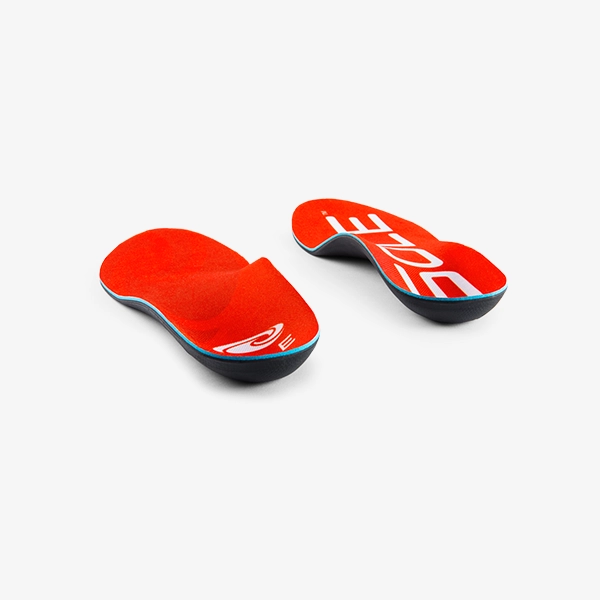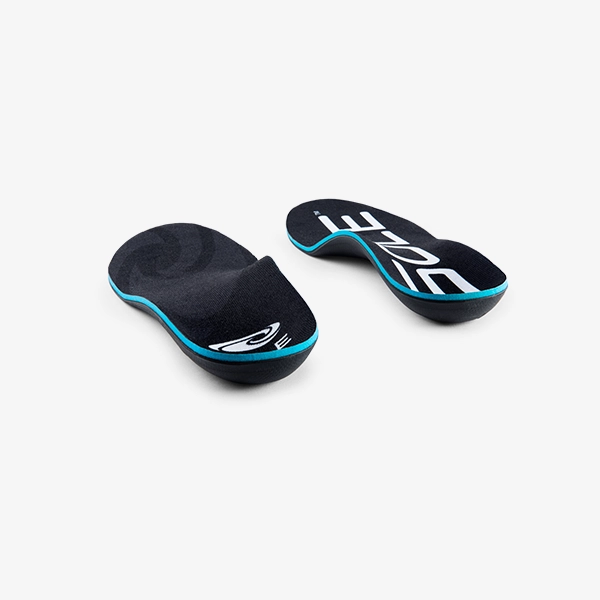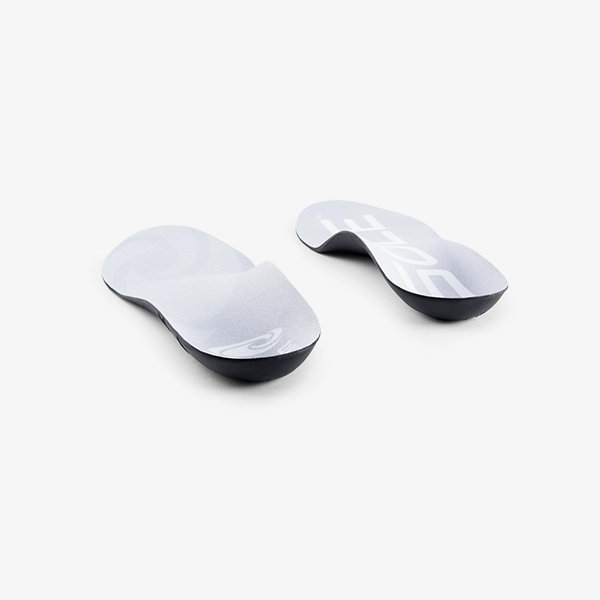Peroneal tendonitis can be a painful condition that’s tricky to recover from. Wearing the right supportive insoles can help your peroneal tendonitis by allowing your ligaments to recover, to ease your pain.
But what does the right peroneal tendonitis insole look like?
In this article we’ll discuss how orthotics can protect you from peroneal tendonitis, and what to look for in an insole to help with this painful condition.
What is peroneal tendonitis?
If your ankle hurts just behind the bony lump on the outside of the ankle, there’s a good chance you have peroneal tendonitis. This condition hurts most when you’re active, placing strain on the peroneal tendons.
Peroneal tendonitis occurs through injury to the peroneal tendons that connect your lower leg to your foot. These tendons—the peroneus brevis and peroneus longus—can become injured through repetitive strain, or through a sudden injury.
Peroneal tendonitis is often caused by your ankle rolling outwards. This could be due to an issue with your biomechanical chain like supination. It can also occur through repetitive sideways forces in your ankles while playing sports.
Insoles for peroneal tendonitis.
A good pair of orthotics for peroneal tendonitis aims to reduce strain on your peroneal tendons to help them recover. Any peroneal tendonitis insole should promote good stable, neutral alignment in your ankle.
SOLE footbeds feature a deep heel cup as part of the SOLE Signature Supportive Shape. This cup cradles the heel in a neutrally aligned position, helping prevent excessive ankle rotation. Less rotational force on the peroneal tendons means more chance for them to recover. It also prevents further aggravating the tendons.
SOLE footbeds also feature support on the lateral side (outside) of the foot. This lateral support further helps to promote neutral alignment by preventing the feet from rolling outward.
SOLE footbeds come in three thicknesses to fit any footwear.
Peroneal tendonitis insoles for people with high arches.
People with high arches often have a heel that is turned slightly inwards due to the structure of their foot. This results in extra pressure on the ankle and peroneal tendons. People with high arches are thus more susceptible to peroneal tendonitis.
When looking for an insole, arch support is often a priority if you have high arches. This can be problematic for people with peroneal tendonitis as the supportive arch can hold your foot in a badly aligned position.
What makes SOLE footbeds particularly suitable for peroneal tendonitis is the dynamic nature of the arch support in our insoles. As you take each step, the arch of a SOLE footbed flexes with your foot. This means your foot can pronate (roll inward) naturally and comfortably.
The arch works together with the deep heel cup to allow for just the right amount of pronation, while promoting neutral alignment. And the best part? The arch still reduces strain in your feet that is so often felt by people with high arches.
SOLE footbeds are clinically proven to reduce strain in your arches by an average of 34%. This helps your feet feel more relaxed generally, and with support across your whole foot, you walk with more confidence on a stable base.
The end result is a more stable, neutral gait that reduces strain on your ankles, including your peroneal tendons.
Custom moldable insoles for peroneal tendonitis.
SOLE footbeds are custom moldable to your unique feet and arch height. Just slip them into your shoes and they’ll custom mold to your feet in a few wears. You also have the option of heat molding our footbeds in your oven at home.
Once the footbed is custom molded to your feet, it helps to distribute pressure evenly across the bottom of your feet. This even pressure distribution, combined with improved alignment, helps promote the sense of walking on a stable, even base. This prevents instabilities that would place strain on your peroneal tendons, causing or exacerbating your tendonitis.
A customized arch is also important because arch support that’s too high or rigid could encourage your foot to roll further in the wrong direction, exacerbating the problem rather than helping it.
A custom molded pair of SOLE footbeds acts as an affordable alternative to a prescription orthotic for peroneal tendonitis.
Peroneal tendonitis insoles for sports footwear.
Peroneal tendonitis is common among people who do sports that involve repetitive impact, like running. For runners, a small inefficiency in your movement or alignment can gradually place strain on your peroneal tendons.
It’s also common in people who play sports that require rapid changes of direction or side-to-side movement like tennis, basketball, football and soccer. As you plant your foot to change direction, your ankle experiences a lot of force in an outward direction. This also places strain on your peroneal tendons that can gradually cause injury over time.
In any of the above sports it's also common to roll an ankle. This puts a sudden load of force on the tendons that stabilize that ankle, often causing sudden injury.
By promoting neutral alignment in your feet and ankles, SOLE footbeds promote efficient energy transfer through your chain of motion. This reduces strain in each step, helps improve balance and stability, and reduces the chance of rolling your ankle as you run.
Our footbeds come in various thicknesses to fit all footwear types.
Which insoles for peroneal tendonitis?
SOLE footbeds all feature the same SOLE Signature Supportive Shape. This means that whichever insole you choose, you’ll get the protective benefits of a supportive, custom moldable insole.
Our footbeds come in three thicknesses, to fit any footwear. The Medium thickness offers the most versatile fit for most shoes, including running shoes and sneakers.
If you need insoles for cleats or slim-fitting shoes, we suggest trying our Thin footbeds.
If you’re looking for extra cushioning, and you wear boots or other shoes with wiggle room to spare, our Thick footbeds are an excellent option.
Lastly, all our footbeds come with a 90 day satisfaction guarantee. This means you can try our footbeds for up to 90 days, and if they don't help you find relief from your peroneal tendonitis, simply return them for a full refund.




